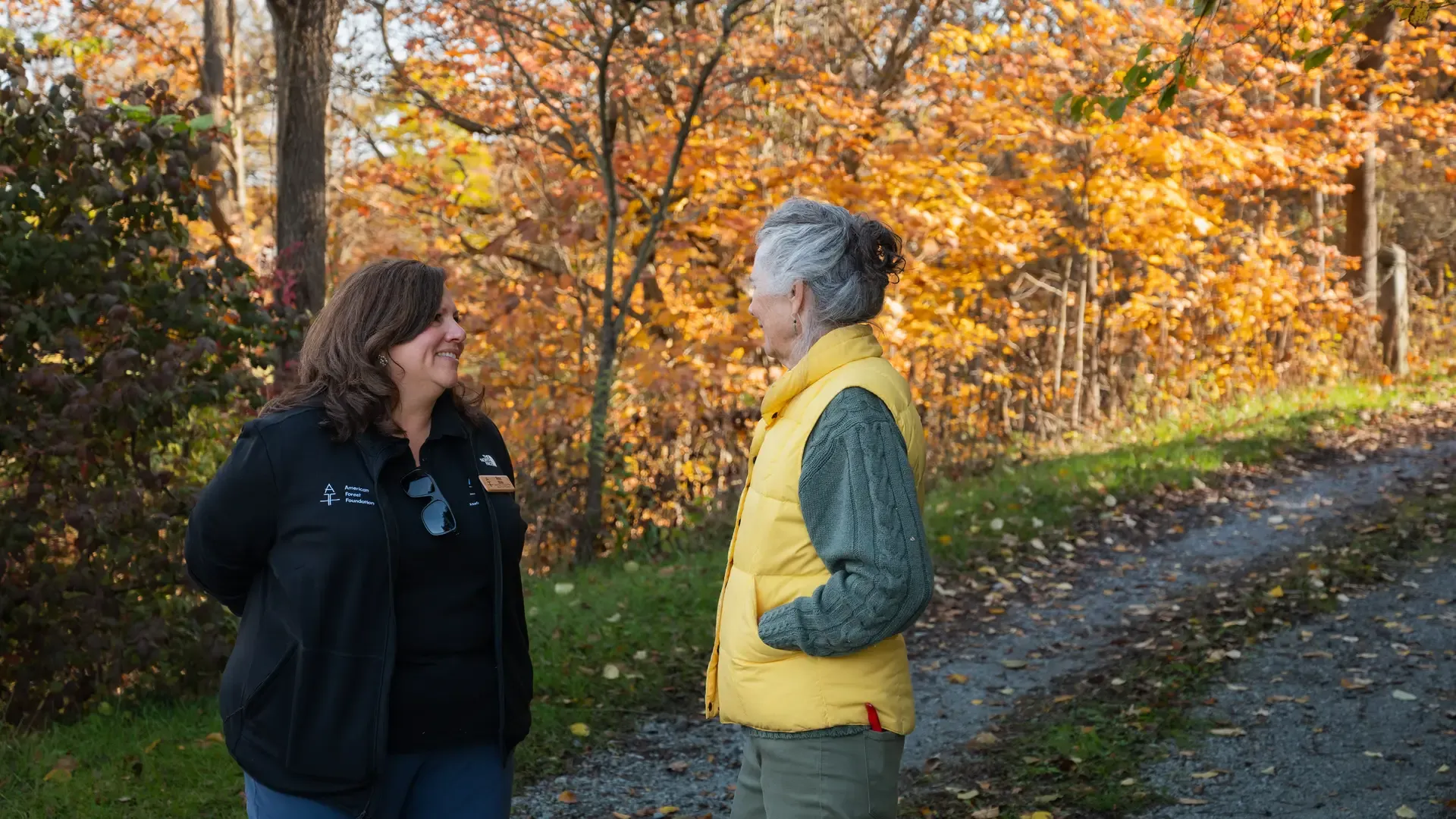What This Year's Election Means for Landowners in FFCP

CEO Rita Hite Speaking with Landowner Kathy McClure on Pennsylvania Property
As happens after each election, when the nation prepares for a political change in the President and the U.S. Congress, questions arise about what the change means for our forests and the family landowners that steward them. At AFF, with over 80 years of history working with family landowners from all walks of life to create meaningful conservation impact, we’re no stranger to navigating political change and what it means for our forests.
We have found that even in a political environment where people are extremely divided, an overwhelming majority of American voters from both parties support taking care of our country's forests. And we’ve heard this especially from family landowners. These forest stewards want to do their part to ensure that the many things that we all rely on from our forests – from the air we breathe, the water we drink, the wildlife we hunt, fish, and enjoy, to the products we use every day, and the climate mitigating benefits too – are cared for and protected for future generations.
We also hear from so many landowners how protecting the health and wellbeing of our lands is getting harder every year with the impacts of a changing climate. This year has proven how damaging extreme weather events can hurt our communities. Hurricanes Helene and Milton caused grave damage to both coastal and land-locked areas of the Southeast. Wildfires continue to plague the West and have even recently ravaged the Northeast. Flooding, drought, invasive species, and disease affect family forests across the nation. Recovery from these disasters, all alongside the cost of keeping forests healthy, and as forest products markets are constantly shifting, are saddling small rural landowners with a burden too big to handle alone.
While there is still uncertainty around what will take priority for our government come January 20, the good news is that the voluntary carbon market remains a critical source of income for our forests, rural economies, and communities. Experts predict continued market growth up to $50 billion in the coming years, leading to increased investment in the lands and communities that are hit first and worst by the impacts of extreme weather. Through the Family Forest Carbon Program, AFF will continue to unlock this market and equip landowners with the support needed to care for the health and improve the value of their forests.
The voluntary carbon market is unique because it is driven by self-interest and landowners’ right to make the best decisions for their land, not government regulation. Yes, there are steps the government can and must take to make this market more accessible, stable, and transparent for rural Americans who are too often left out of economic opportunities such as this, like passing the Rural Forest Markets Act or maintaining Inflation Reduction Act. However, the market is not driven by the government and in fact, we’ve seen significant market growth when governments don’t act.
Why is this? Because the voluntary carbon market is just that – a market. It is driven by buyers – largely corporations – who are seeing the risks posed by climate change to their businesses, investors, supply chains, and customers, and are pricing those risks into their financials. These corporations are taking steps to reduce these risks and purchasing high quality carbon credits from project developers like the Family Forest Carbon Program is one such strategy. So even as our government leaders sort out priorities, AFF and our Family Forest Carbon Program will continue working to open access to this market and unlock the needed financing to help families improve the health, resilience, and productivity of their forests all while making the planet more livable and resilient for everyone.
And even as we do this, we will continue to advocate with the new President and new Congress, and with the bipartisan coalitions and partnerships we’ve always pursued, for the support family forest owners need to improve the health, resilience, and productivity of their lands for this and future generations.